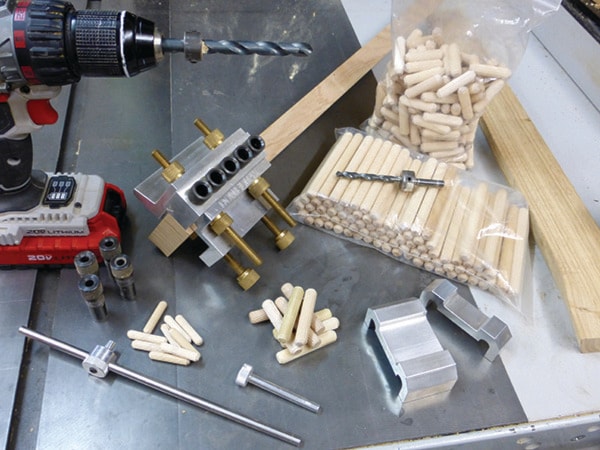In last month’s Shop Talk column, we took a look at the proper way to prepare rough lumber for use in a project. If your material is not straight and square any joinery you attempt will likely be less than perfect.
Joinery is the art of fastening two pieces of wood together in a way that allows for the natural movement of the material while providing a strong connection between the two pieces that is able to resist the loads placed on it.
There are several classic methods that have been developed throughout history, have stood the test of time and not fundamentally changed. What has changed are the tools, hardware and adhesives that we use.
Methods such as dovetails, dowels, screws and mortise and tenon joints are almost as old as woodworking itself. In the past, this joinery was laid out by hand and cut with hand tools, requiring a great deal of skill. We now have a wide choice of powered machinery to cut these and that has made the process considerably easier to master.
The trick is to choose the best method of joinery for the project at hand and the most effective way to cut it. There are many tools and jigs out there on the market and some deliver on the promises they make and others fall somewhat short.
The dovetail joint is one of the few joints that will stay together without glue. It relies on wedge shaped pins and tails that create an interlocking joint along the ends of two boards such as the sides of a drawer.
Dovetails can be cut with hand tools but be sure to invest in quality layout and cutting tools for the purpose or you will likely be frustrated with the results.
A more modern alternative is to use one of the many router jigs on the market. The trade-off is that router cut dovetails look mechanical because they have to be of a certain size to accommodate the bit that does the cutting. Dovetail jigs come in a wide price range with the inexpensive models being very basic while the more expensive ones offer features that are well worth the added cost.
For joints with a large long grain glue area that do not have any end grain, a well prepared butt joint is more than sufficient. Today’s modern wood glue will always be stronger than the wood around it.
When we encounter a joint where there isn’t enough glue surface for a strong joint we must create additional gluing area. Biscuits joinery has been around since the 1950s. This system was developed after the war as a fast method to assemble kitchen cabinet components constructed with manufactured sheet goods. The slot and biscuit provide a larger glue surface between two pieces of material to be joined.
This system is poor at providing positive alignment of the faces of the material as the fit is rather loose. When used to glue up larger panels from individual boards, biscuits do not offer any advantage over a well prepared and glued butt joint.
Pocket screws are fast to install and their advantage is that they are easy to create and assemble on a job site. As the name suggests, a specialized screw is used so there is no waiting for glue to cure.
The downside of this method is that it leaves behind an ugly elongated hole on the back of the material and without hold down clamps and a table, flush surfaces are difficult to achieve. There are plugs available to fill the holes but this method is best used for built-in casework and architectural details where the back will be hidden.
The Festool Domino is a system that uses a floating tenon. A specialized cutter is used to cut oval holes in the parts to be joined and then a ‘domino’ is used when the joint is glued. This is a well designed system but is relatively complex, relies on proprietary supplies and is the most expensive option.
The mortise and tenon joint has a long history and is one of the most useful. It can be cut easily using hand tools or there are a number of powered options as well. My preferred method is to cut them using the Leigh FMT Router Jig. I’ll take a closer look at this joint in an upcoming column.
The dowel joint is perhaps one of the oldest methods used to join two pieces of wood. This joint is very easy to make: you simply drill a hole in both pieces, apply a little glue, insert a dowel and clamp. What presents more of a challenge is to locate the holes precisely.
I have tested and reviewed several dowel jigs and without a doubt, the best one on the market is the Dowelmax. It provides absolute alignment for perfectly smooth faces and is dead simple to use. It also creates the strongest of the joints we tested.
If I were only allowed to have one joinery tool in my shop, I would have to choose the Dowelmax as it outperforms all the others in terms of cost, strength, versatility and ease of use.
In my experience, when buying tools, you get what you pay for. When purchasing tools for my shop I’ve chosen to stay with the name brand manufacturers as entry level copies in my experience have always been a disappointment.
Michael Kampen is the resident woodworker and manages the CNC Shop at Westcoast Home Hardware.
